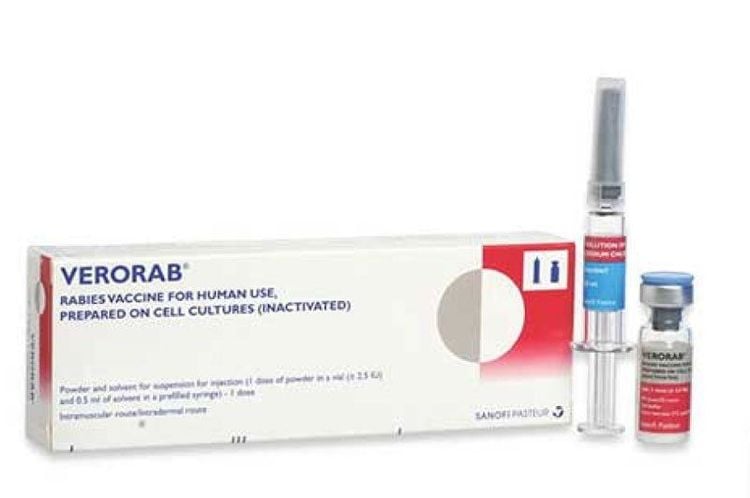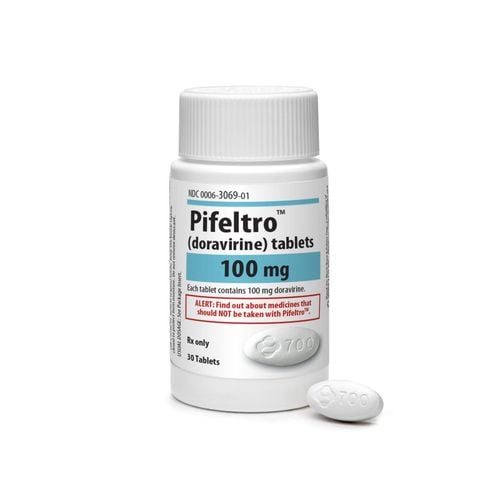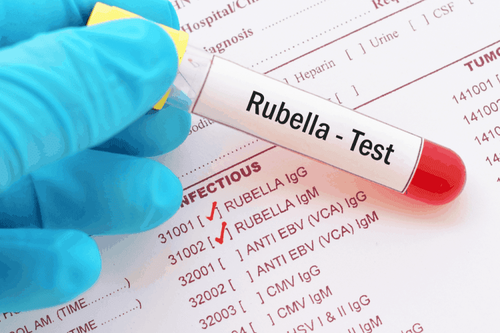This is an automatically translated article.
The article was consulted professionally with BS. Nguyen Hai Ha - Head of Vaccine Unit - Pediatric Outpatient Department - Pediatric Center - Vinmec Times City International Hospital.There is no single vaccine against rabies that can provide lifelong immunity. Currently, there are single-dose vaccines that only provide immunity for a certain period of time.
1. Vaccine against rabies
Rabies vaccine is a safe and highly effective vaccine that is given to all people, including pregnant women.Vaccines are used for pre-exposure prophylaxis for high-risk groups such as children, caregivers, and slaughterhouses. The vaccine is also used for post-exposure prophylaxis of animal bites (PEP). Persons receiving rabies vaccination before exposure or post-exposure prophylaxis will create immune memory cells; An immune response will be generated rapidly when the person is given a booster dose of rabies vaccine. Currently, there are a number of rabies vaccines in use in Vietnam, including:
Verorab (France). Abhayrab (India). Indirab (India) Rabipur (India).

2. Rabies vaccination regimen as recommended by WHO
2.1. Pre-exposure prophylaxis An injection given before a vaccinated person is bitten by an animal. Includes 2 regimens for intramuscular injection and intradermal injection:Intramuscular regimen: One dose of 0.5ml intramuscularly on a schedule of days 0.7 and 21 or 28. Intradermal regimen: A 0.1ml intradermal dose is given. inject on days 0.7 and 21 or 28. Intramuscular or intradermal injection, 1 dose each arriving on days 0, day 7, and day 21 or 28. Day 0 is the first day of injection. After the 3-dose regimen, for the best protection, the 4th dose should be repeated after 1 year and once every 5 years.
When giving pre-exposure vaccination by intradermal regimen, enough people should be mobilized so that the opened vials of vaccine can be used up within 6 hours of opening the vial, 3 doses/3 times to inject to save costs and increase the percentage of people protected in cases of vaccine scarcity.
2.2. Post-exposure prophylaxis (PEP): 3 types of injectable regimens recommended by the World Health Organization (WHO): 5-dose and 4-dose IM regimens (“Essen”) One dose per day on days 0, 3, 7, 14 and 28. Inject into upper arm (delta muscle area) or, in young children, anterolateral thigh. The vaccine should not be administered in the buttock area because the absorption of the vaccine in this area is not guaranteed.
The US Centers for Disease Control (CDC) Atlanta, USA recommends a reduced dose regimen (4 doses IM) based on research showing that 4 doses of vaccine combined with anti-rabies serum produces adequate immune response and the 5th dose of vaccine is not much more advantageous than the 4th dose.

Intramuscularly each dose on day 0, day 3, day 7, day 14 and day 28. Intramuscularly each dose on days 0, day 3, day 7 and day 14. Reduced dose Essen regimen (4 visits for vaccination/with or without rabies serum)
Intramuscular each dose on days 0, day 3, days 7 and 14. Post-exposure prophylaxis with a regimen of 5 intramuscular injections is recommended for immunosuppressed or deficient individuals. The first dose (day 0) of the regimen should be given as soon as possible after exposure. Day 0 is the first day of injection, possibly not the day of the bite.
Multi-site intramuscular injection regimen shortens the time (Zagreb regimen), 4 doses/3 injections, regimen (2-1-1) 1 dose IM into the right arm and 1 dose into the arm left side (delta muscle area) on day 0 followed by another intramuscular dose into the arm (delta muscle area) on days 7 and 21.
This injection regimen reduces 1 dose of vaccine and 2 visits.
Thai Red Cross (TRC) multisite intradermal injection (ID) protocol. 2 intradermal injection (2-2-2-0-2) Each dose (0.1 ml) is injected intradermally into the arms above the deltoid muscle on day 0, day 3, day 7 and day 28.
Reference dose of rabies vaccine will help customers understand the effectiveness and dose of rabies vaccine. However, it is extremely important to visit a doctor directly to receive direct advice and support for each specific case.
In Vietnam, which is still a country with a high risk of rabies, in addition to treating wounds after being bitten by animals, the main vaccine regimen used for post-exposure prophylaxis is the 5-shot regimen. rabies vaccine (if client has not been vaccinated before exposure), inject on days 0.3, 7, 14, 28 (with 0 being the first day of vaccination, as soon as possible after being bitten by an animal) good). In addition, depending on the grade of the wound, it is necessary to combine injections of anti-rabies serum and tetanus vaccine for the best protection. If the client has been vaccinated with pre-exposure prophylaxis, after being bitten by an animal, there is no need to inject rabies serum and only 2 doses of rabies vaccine on day 0 and day 3 can protect the body. with rabies virus.
Please dial HOTLINE for more information or register for an appointment HERE. Download MyVinmec app to make appointments faster and to manage your bookings easily.














